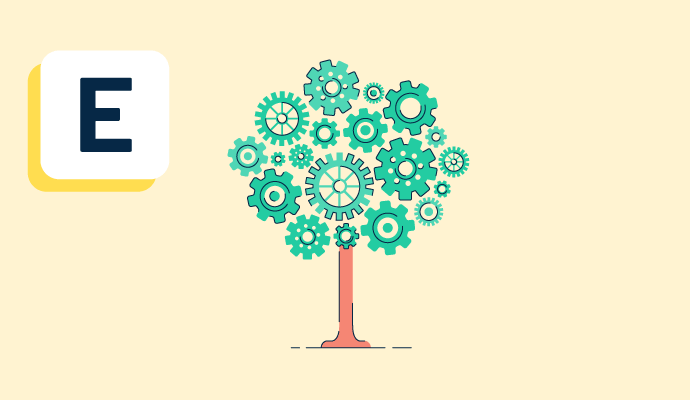What is enterprise architecture?
Enterprise architecture (EA) is when organizations design, plan, and implement enterprise analysis to ensure business strategies are properly executed. The process helps companies develop IT projects and policies to achieve business goals. This process also ensures that the organization is updated with industry trends and disruptions.
EA takes a company's business requirements and shows employees how information and technology intertwine. Companies must keep up with constantly shifting technologies.
Enterprise architecture uses a holistic approach to provide the latest information on business and technology innovations efficiently and reliably. Companies usually turn to enterprise architecture software to assist in the process, so nothing falls through the cracks.
Enterprise architecture methodologies
Because EA is a company-wide process, multiple frameworks are necessary. Here are the three most-used enterprise architectural planning methodologies:
- The Open Group Architecture Framework (TOGAF): Provides principles that help organizations design, plan, implement, and govern enterprise IT architecture with standardized language, compliance methods, standards, suggested tools, and a framework for identifying best practices.
- The Zachman Framework for Enterprise Architecture: Named after a founder of EA, this framework is sometimes referred to as a taxonomy. It covers six architectural focal points and six stakeholders to create standardized definitions for IT architecture components and outputs.
- Federal Enterprise Architecture Framework (FEAF): Developed in response to the Clinger-Cohen Act that created requirements for IT effectiveness in federal agencies. While created for government agencies, it can apply to any company.
Benefits of enterprise architecture
Organizations rely on EA in times of significant organizational changes and whenever business processes lack consistency. Additionally, enterprise architecture is used by IT teams to avoid errors and security breaches and make IT accessible across the entire organization. Primary benefits include:
- Accessible IT: The process facilitates open communication between IT and the rest of the organization. This provides all business units with a clear view of IT architecture and connects the construction of this architecture to organizational objectives.
- Investments: Gives businesses the information necessary to prioritize investments, ensuring that each investment meshes with the existing and future architecture.
- Reporting: EA acts as a benchmarking framework, allowing organizations to compare their results against competing companies and industry standards.
Basic elements of enterprise architecture
While some elements depend on the organization’s IT infrastructure and unique needs, the EA framework typically includes six basic elements. They are as follows:
- Architecture management: An oversight team is necessary to ensure the organization’s goals align with the IT infrastructure.
- Architecture framework: The framework is the methodology used to define all enterprise strategies and IT infrastructure.
- Implementation methodology: The steps involved in the framework’s implementation.
- Documentation artifacts: A place where the organization houses documentation for the strategy and any resulting changes in processes.
- Architecture repository: A place for any relevant resources, tools, and processes involved in implementing the framework.
- Associated best practices: To ensure consistency, transparency, and compliance, each organization must outline its own best practices as a way to standardize operating procedures.
Enterprise architecture requirements
Requirements range from simple spreadsheets to complicated third-party software. Here are the most common elements involved in enterprise architecture:
- Skills: Enterprise architects require several hard IT skills (Java, cloud computing, and strategy development), as well as hands-on experience with technology like computer systems, hard drives, and mainframes.
- Tools: Basic tools necessary include spreadsheet and presentation software (Microsoft Excel and PowerPoint are most commonly used). Third-party software is available for organizations creating more complicated EA strategies.
- Certifications: IT enterprise architects can earn several certifications to demonstrate their skills. Certifications can focus on frameworks or specific skills (like cloud architecture).
Enterprise architecture best practices
Organizations need architects who understand how business components relate to one another to get the most out of the process. The most important best practices to follow include:
- Prioritize communication. Because the process encompasses all business units, organizations must prepare a solid plan for consistent decisions and communication.
- Start with the future. EA must begin with a clear goal for future state architecture. This goal should align with the organization’s future needs, ensuring all technology investments will fill these needs and yield success.
- Measure and optimize. Implement a system for measuring progress made, then use the data gathered to optimize future iterations of the EA plan.

Martha Kendall Custard
Martha Kendall Custard is a former freelance writer for G2. She creates specialized, industry specific content for SaaS and software companies. When she isn't freelance writing for various organizations, she is working on her middle grade WIP or playing with her two kitties, Verbena and Baby Cat.



















